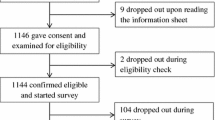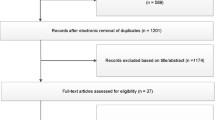Abstract
Patients want and need comprehensive and accurate information about their medicines so that they can participate in decisions about their healthcare. In particular, they require information about the likely risks and benefits that are associated with the different treatment options. However, to provide this information in a form that people can readily understand and use is a considerable challenge to healthcare professionals. One recent attempt to standardise the language of risk has been to produce sets of verbal descriptors that correspond to specific probability ranges, such as those outlined in the European Commission (EC) Pharmaceutical Committee guidelines in 1998 for describing the incidence of adverse effects.
This paper provides an overview of a number of studies involving members of the general public, patients, and hospital doctors, that evaluated the utility of the EC guideline descriptors (very common, common, uncommon, rare, very rare). In all studies it was found that people significantly over-estimated the likelihood of adverse effects occurring, given specific verbal descriptors. This in turn resulted in significantly higher ratings of their perceived risks to health and significantly lower ratings of their likelihood of taking the medicine. Such problems of interpretation are not restricted to the EC guideline descriptors. Similar levels of misinterpretation have also been demonstrated with two other recently advocated risk scales (Calman’s verbal descriptor scale and Barclay, Costigan and Davies’ lottery scale).
In conclusion, the challenge for risk communicators and for future research will be to produce a language of risk that is sufficiently flexible to take into account different perspectives, as well as changing circumstances and contexts of illness and its treatments. In the meantime, we urge the EC and other legislative bodies to stop recommending the use of specific verbal labels or phrases until there is a stronger evidence base to support their use.



Similar content being viewed by others

Notes
This work was carried out in collaboration with Dr Wendy Holden from the Royal Berks and Battle Hospitals Trust.
References
From compliance to concordance: achieving shared goals in medicine taking. London: Royal Pharmaceutical Society of Great Britain and Merck, Sharp & Dohme, 1997
National plan for the NHS. London: Department of Health, 2000
Doyal L. Informed consent: moral necessity or illusion? Qual Health Care 2001; 10: 29–33
Calman K, Royston G. Risk language and dialects. BMJ 1997; 315: 939–42
European Commission. A guideline on the readability of the label and package leaflet of medicinal products for human use. EC Pharmaceuticals Committee, 1998
European Commission. European Commission Council Directive 92/27/EEC (OJ NoL 113 of 30.4.1992, p.8) 1992
Dickinson D, Raynor DK Duman M. Patient information leaflets for medicines: using consumer testing to determine most effective design. Patient Educ Couns 2001; 43: 147–59
Berry DC, Knapp PR, Raynor DK. Is 15% very common: informing people about the risks of medication side effects. Int J Pharm Pract 2002; 10: 145–51
Bryant GD, Norman GR. Expressions of probability: words and numbers [letter]. N Engl J Med 1980; 302: 411a
Mazur DJ, Merz JF. Patients’ interpretations of verbal expressions of probability: implications for securing informed consent to medical interventions. Behav Sci Law 1994; 12: 417–26
Reagan RT, Mosteller F, Youtz C. Quantitative meanings of verbal probability expressions. J Appl Psychol 1989; 74: 433–42
Timmermans D. The roles of experience and domain of expertise in using numerical and verbal probability terms in medical decisions. Med Decis Making 1994; 14: 146–56
Wallsten S, Budescu DV, Rapoport A, et al. Measuring the vague meaning of probability terms. J Exp Psychol Gen 1986; 115: 348–65
Berry DC, Michas IC, Gillie T, et al. What do patients want to know about their medicines and what do doctors want to tell them? A comparative study. Psych Health 1997; 12: 467–80
Berry DC, Michas IC, DeRosis F. Evaluating explanations about drug prescriptions: effects of varying the nature of information about side effects and its relative position in explanations. Psych Health 1998; 13: 767–84
Berry DC, Michas IC, Bersellini E. Communicating information about medication side effects: effects on satisfaction, perceived risk to health and intention to comply. Psych Health 2002; 17: 247–67
Berry DC, Michas IC, Bersellini E, Communicating information about medicine: the benefits of making it personal. Psych Health. In press
Berry DC, Knapp PR, Raynor DK. Provision of information about drug side effects to patients. Lancet 2002; 359: 853–4
Berry DC, Raynor DK, Knapp PR. Communicating risk of medication side effects: an empirical evaluation of EC recommended terminology. Psych Health Med. In press
Cartwright A. Medicine taking by people aged 65 or more. Br Med Bull 1990; 46: 63–76
Claesson S, Morrison A, Wertheimer AI, et al. Compliance with prescribed drugs: challenges for the elderly population. Pharm World Sci 1999; 21: 256–9
Kane RL, Ouslander JG, Abbrass IB. Essentials of clinical geriatrics. New York: McGraw Hill, 1994
McElnay JC, McCallion R. Adherence and the elderly. In: Myers LB, Midence K, editors. Adherence to treatment in medical conditions. London: Harwood, 1998
Department of Health. UK National Health Service Framework for Older People. 2001
Pander Maat H, Klaasan R. Side effects of side effect information in drug information leaflets. J Tech Writing Commun 1994; 24: 389–404
Fischer K, Jungermann H. Rarely occurring headaches and rarely occurring blindness: is rarely rarely? The meaning of verbal frequentistic labels in specific medical contexts. J Behav Dec Mak 1996; 9: 153–72
Bennett P. Communicating about risks to public health: pointers to good practice. London: Department of Health, 1998
Knapp PR, Berry DC, Raynor DK. Testing two methods of presenting side effect information about common medicines [abstract]. Int J Psychoanal Psychother 2001; 9: R6
Cochrane Library. Update Software [online]. Issue 3, 2000; Oxford. Available from URL: http://www.update-software.com/cochrane/cochrane-frame.html [Accessed 2002 Dec 10]
Annual Report, Proprietary Association of Great Britain. London: PAGB, 2001
Berry DC, Bersellini E. Doctors’ and patients’ understanding of the Calman risk scale. Proceedings of the British Psychological Society. In press
Kuipers B, Moskowitz AJ, Kassierer JP. Critical decisions under uncertainty: representation and structure. Cognit Sci 1988; 12: 177–210
Windschitl PD, Wells GL. Measuring psychological uncertainty: verbal versus numeric methods. J Exp Psych App 1996; 2: 343–64
Calman KC. Cancer: science and society and the communication of risk. BMJ 1996; 313: 799–802
Edwards A, Elwyn GJ, Stott N. Researchers should present results with both relative and absolute risk. BMJ 2001; 318: 7183
Paling J. Up to your armpits in alligators: how to sort out what risks are worth worrying about. Gainesville (FL); Risk Communication and Environmental Institute, 1997
Barclay P, Costigan S, Davies M. Lottery can be used to show risk. BMJ 1998; 316: 1242–3
Weber EC, Hilton, DJ. Contextual effects in words: perceived base rate and severity of events. J Exp Psychol Hum Percept Perform 1990; 16: 781–9
Lipkus IM, Hollands JG. The visual communication of risk. J Nat Cancer Inst Monogr 1999; 25: 149–63
Edwards A, Elwyn GJ, Mulley A. Explaining risks: turning numerical data into meaningful pictures. BMJ 2002; 324: 827–30
Calman K. Issues of risk: this unique opportunity [The William Pickles lecture]. Br J Gen Pract 2001; 51: 47–51
Edwards A, Elwyn GJ. Risks: listen and don’t mislead. Br J Gen Pract 2001; 51: 259–60
Edwards R, Wiholm BE, Martinez C. Concepts in risk benefit assessment: a simple merit analysis of a medicine. Drug Saf 1996; 15(1): 1–7
Edwards A, Pill R, Stott N. Use of standard terms is unlikely to result in standard communication [letter]. BMJ 1996; 313: 1483
Acknowledgements
No sources of funding were used to assist in the preparation of this manuscript. The authors have no conflicts of interest that are directly relevant to the contents of this manuscript.
Author information
Authors and Affiliations
Corresponding author
Rights and permissions
About this article
Cite this article
Berry, D.C., Raynor, D., Knapp, P. et al. Patients’ Understanding of Risk Associated with Medication Use. Drug-Safety 26, 1–11 (2003). https://doi.org/10.2165/00002018-200326010-00001
Published:
Issue Date:
DOI: https://doi.org/10.2165/00002018-200326010-00001



